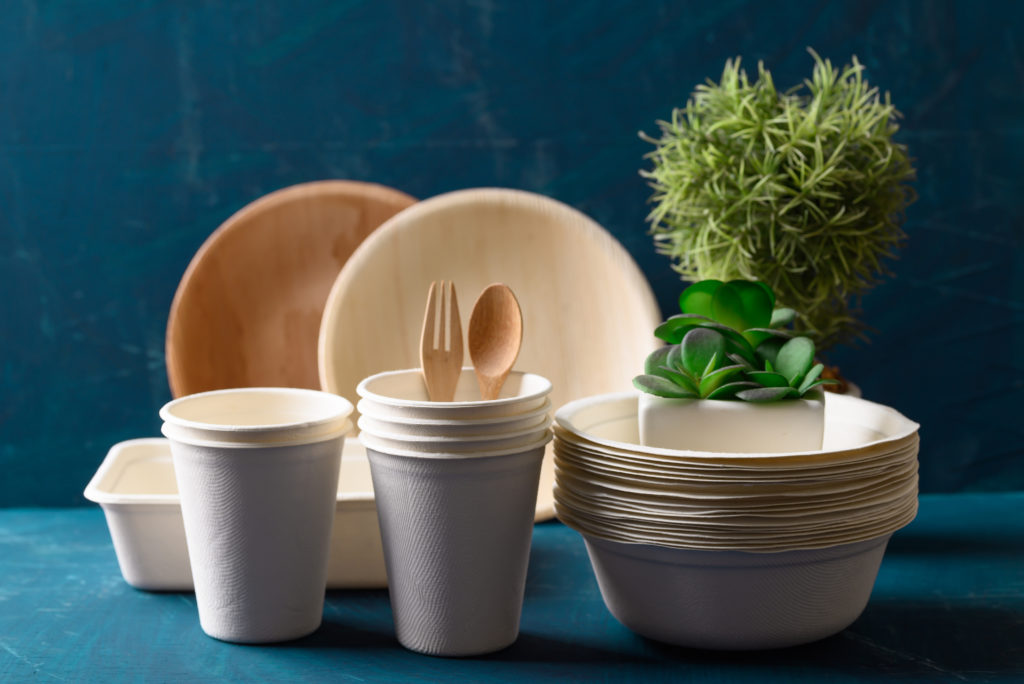Plastic Alternative Packaging Solutions to Reduce Waste this Holiday Season

The holiday season is in full swing and so, too, is the need for solutions that help reduce waste during this time of year. Between seasonal decorations, gift exchanges, and the uptick in shipments, the most wonderful time of the year can also be the most wasteful.
According to data from Stanford University, Americans throw away 25% more trash during the holiday period between Thanksgiving and the New Year compared to any other time of year. The waste during this period amounts to 25 million extra tons of garbage, equaling approximately 1 million tons per week.
Much of the waste created during this time of year can be attributed to packaging – the plastic box your tree ornaments come in, boxes and gift wrapping paper, and the bubble wrap that secures your online orders as they make their way to the recipient. The material that contributes most to the waste is (unsurprisingly) plastic. In fact, 42% of plastic produced each year goes towards packaging.
But as we know, the greatest challenges offer the greatest opportunities to apply solutions that make a positive impact on the planet and businesses, too. The search for innovative alternatives to plastic has created a rapidly growing market for alternative packaging solutions, which is expected to reach a market value of $71.8 billion by the end of 2021 and the global market is poised to reach $142 billion in the coming years.

By investing in alternative packaging solutions, businesses could position themselves as leaders in a rapidly growing market, improve their impact on the planet, reduce the production of excessive packaging, and minimize the costs required to dispose waste – all in one fell swoop. Let’s take a look at the Solutionists behind the alternative packaging wave, and the businesses who’ve found success in their packaging solutions.
Modern material science has led to a growing variety of innovations in the packaging industry, as plastic alternatives are developed out of materials such as algae, hemp, sugarcane, mushroom, and seaweed. Major players in the global plastic alternative packaging include Tetra Pak, Amcor Limited, Plastic Suppliers Inc., Kruger Inc., International Paper Company, and DS Smith, among many more.
DS Smith’s specialities include not only sustainable packaging solutions, but also paper products and worldwide recycling services. Interestingly, the company grew from the family operations of the Smith family in East London, a box-making business started in the 1940s. As time past, the Smith family recognized how sustainable packaging could help solve a customer pain point, while also making a better impact on the bigger picture of our planet and its future.
“Whether it is reducing waste or designing new materials, our values provide us with the tenacity to continue to challenge and push each other to meet these ambitions. I couldn’t be more proud of our people for making this happen.”
Miles W. Roberts, CEO, DS Smith
DS Smith’s operations have now spread across Europe and North America, with rapid growth in recent years leading them to become one of the largest companies listed on the London Stock Exchange.
DS Smith is just one example of the business opportunity that awaits in the plastic alternative packaging industry. According to studies by The Business Research Company, the market where plastic alternative packaging will gain in size the most is in the USA, reaching a value of $1.4 billion.

The largest business operations in the world have invested heavily in packaging solutions, adjusting their practices and processes to involve less plastic and less waste. Last year, Unilever announced its commitment to convert PET waste into recyclable material for packaging.
By 2021, the company aims to cut its use of virgin plastic in half by reducing its overall use of plastic packaging by over 100,000 tons. By 2025, the company confirmed it will halve its use of virgin plastic by reducing its use of plastic packaging by more than 100,000 tonnes and accelerating its use of recycled plastic.
“Despite challenging conditions, we must not turn our backs on plastic pollution. It is vital for us, and for the rest of the industry, to stay the course, cut the amount of plastic we use and rapidly transition to a circular economy.”
Alan Jope, CEO, Unilever
So far, Unilever has made good on its promises. Between 2019 and 2020, 10% of the company’s plastic footprint was comprised of post-consumer recycled plastic, and it is on pace to reach 25% by their 2025 goal. They’ve also made moves to remove plastic from the equation entirely when it comes to certain products. For example, Unilever’s switch to recyclable paper ice cream tubs saved about 4,500 tons of plastic.
While there is still greater innovation to strive for, it’s exciting to see global market leaders taking a decisive approach at incorporating net positive solutions in their daily operations. For Unilever, going net positive isn’t just essential for the planet, it’s an outright business strategy – one that we can all learn from.
“We want to do more good for our planet and our society – not just less harm,” Unilever’s official strategy page reads. “We want to act on the social and environmental issues facing the world and we want to enhance people’s lives with our products. This is how we will grow our business.”


Leave a Reply